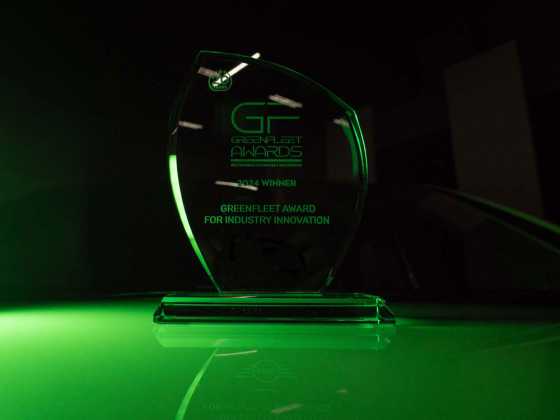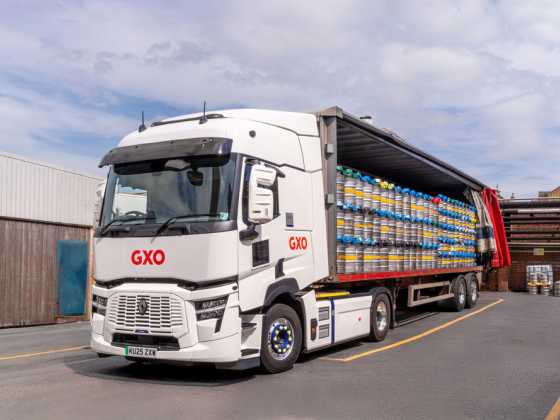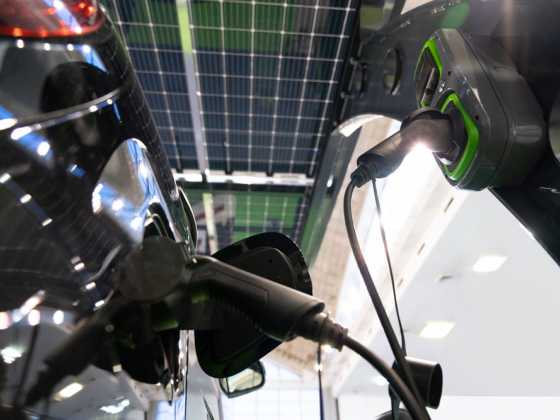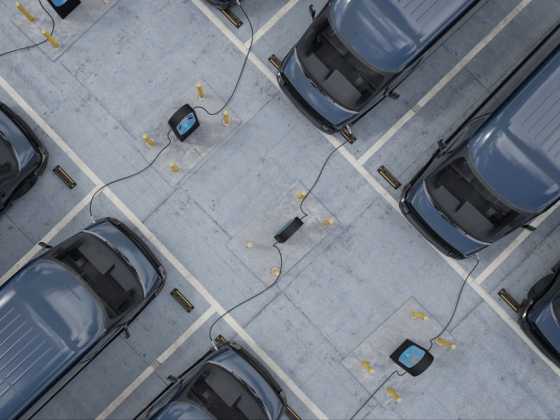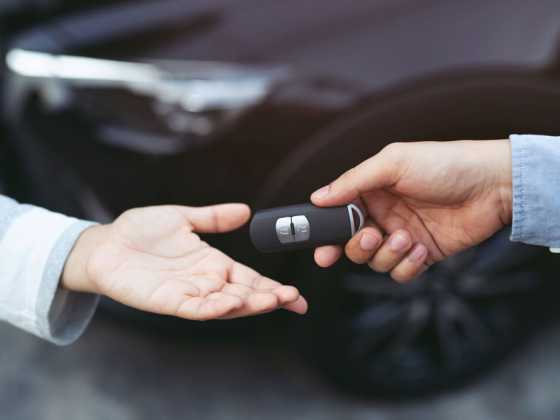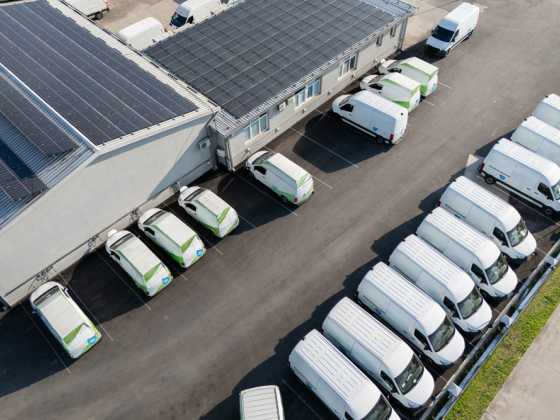GreenFleet Roundtable: Warrington
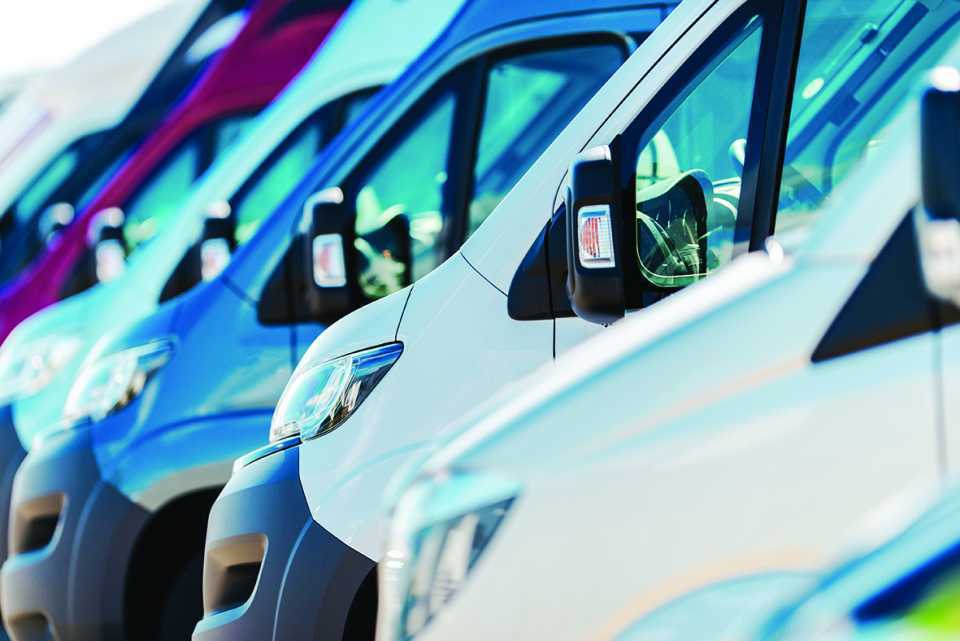
There was a diverse representation of fleets in attendance at the GreenFleet Roundtable in Warrington, all experiencing their own pain-points on the road to decarbonisation. Event host Kate Armitage reflects on the discussion
The most recent GreenFleet Roundtable took us to Warrington, with representation from fleets based across the Northwest of England. It was clear that there is tremendous diversity of fleets, from HGV and Commercial vehicles, taxis, as well as council and blue light fleets, and they all face different challenges.
The lowest emission vehicle is the one you don’t own
Whilst it may seem obvious, removing underutilised vehicles from the fleet is the quickest way to save money, reduce administration and of course it is one less vehicle that needs to become zero emission.
The Environment Agency has worked hard to reduce the overall fleet size, removing 800 assets from the books.
Catherine Williams, senior project manager at the Environment Agency noted: “The Environment Agency has a big priority to get to net zero by 2030, and we have had to make big changes. From July, the company car list is becoming all electric.”
Similarly Speedy hire are moving to an EV only car list from 2024.
James Brown, from the EST Fleet Support team works with fleets of all sizes to offer a Fleet Review that helps them understand where vehicles can be removed from the fleet and develop a net zero transition plan.
Understand the problem
James noted that where “no two fleets are the same”, it is important to analyse where and how fleet vehicles are being used. Telematics data is an extremely useful tool; from this data it is possible to identify vehicles suitable for electrification today.
Richard Parker, corporate sales manager for Bridgestone Mobility Solutions, the parent company of Webfleet, added: “Webfleet takes the data directly from the CAN bus, and from this it is possible to model the likely energy consumption of the future fleet and determine where and how the vehicles will be charged.” This data can also support energy surveys and form the basis of a transition plan.
Once the vehicles are on fleet, Webfleet is also able to track the battery state of charge and monitor charging activity. The next step for Webfleet is to develop a platform that integrates vehicle data in real time and also provides real time chargepoint data to provide live vehicle charging management and optimization (of both vehicles and charging hardware). Webfleet is also able to monitor the battery state of health.
Put the driver at the heart of the transition
As well as the modelling and planning, there was a cautionary note to keep the drivers at the front and centre of the transition. “Don’t underestimate the driver – they are the ones who will deliver the benefit to the business,” was the message.
There is an opportunity to focus on driver well-being which will get the best out of the vehicles (reduced speeding, reduced braking etc) as well as offering training and operational support to ensure the vehicles are charged as planned.
Inevitably there will be some resistance from staff who are reluctant to switch from internal combustion engines.
The Environment Agency runs focus groups to understand employee needs and concerns.
And Aaron Powell, fleet director at Speedy Services has found a practical approach. He said: “We take our drivers on manufacturer days where they get to experience the vehicles firsthand and expand their knowledge – even the more resistant drivers warm up to driving electric.”
An opportunity to learn from mistakes
Charging infrastructure is always a hot topic at the Greenfleet Roundtables, and Warrington was no exception.
As fleets increase their EV penetration – there will be more demands on the EV charging infrastructure, for example increasing the volume of chargepoints, introducing load balancing, and introducing the ability to charge employees for electricity.
As charging needs become more sophisticated, several of our roundtable fleets have learned that all charging solutions are not equal! Hardware reliability, poor aftercare service and limited software services were cited as problems.
Charging infrastructure is expensive and price is a big consideration in the procurement process. “Closed systems” where hardware and software is unique to that solution provider tend to be lower cost. This approach is great when everything is working, however, in the event of a failure the fleet is unable to switch provider and is effectively “locked in” to that solution.
Mick Johnson, sustainability officer for Cheshire Police and Cheshire Fire & Rescue, has experienced a closed system. He said: “Some of the chargers are obsolete and their back-office services and customer services are not good.”
Another of our fleets is also looking for a new solution as the back-office system is not suitable for a large-scale operation with 250 depots.
Open chargepoint protocol (referred to as OCPP 1.6 or 2.0) is a universal communication protocol that allows interoperability between hardware and software solutions, and importantly allows the fleet the flexibility to switch providers. Whilst OCPP compatibility might come at a price, it effectively futureproofs the growth of the network, and allows solution providers such as Webfleet build to an open platform. Drax has also embedded OCPP throughout their service offering.
Paul George, commercial manager for EV & Infrastructure at Drax Energy Solutions explained: “Infrastructure must be futureproof, it needs to grow and flex with the core business and OCPP allows this”.
Drax also provides a joined-up energy strategy: “Many of our competitors are focused on hardware, at Drax we believe that kWs should be the focus. We install and act as the ChargePoint Operator which includes charging management [ie load balancing] and cost management [such as peak time avoidance]. It is important to quantify the energy requirements, if you understand the kWh’s and idle time we can calculate how much power the chargepoints need. If there is a shortfall in power we can shift the charging to the troughs.”
Whilst Drax Energy Solutions aim to mitigate the need for a network upgrade, ultimately this might be unavoidable. The cost for upgrades is high and varies significantly from site to site. Neil Shacklady of West Lancashire Borough Council, had been quoted £1m to upgrade a substation. Paul George explained that hope was on the horizon for fleets as the way Distribution Network Operators charge for upgrades changed with effect from 1st April this year, which should see connections costs coming down.
Indirect emissions
Whilst most organisations are coming to grips with Scope 1 emissions, Scope 3 emissions are increasingly hitting the agenda.
Scope 3 emissions include indirect emissions from third party suppliers and includes (amongst other things) transportation & distribution and purchased goods & services.
Whilst Scope 3 reporting is not yet mandatory, some of our fleets, including West Lancashire Borough Council and Alder Hey Childrens Hospital, have contracted out services and are now working closely with their partners to ensure contractual obligations to move to net zero.
It was noted that some large organisations with thousands of suppliers will eventually terminate contracts that do not meet their net zero targets; this could be devasting for smaller fleets that have not taken steps to reduce emissions.
Total Cost of Ownership is a moving target
The continuing high cost of electricity has had a significant impact on the current total cost of ownership. Aaron Powell also noted that as tax incentives reduce further the TCO is likely to get worse before it gets better, coupled with the fact that vehicle prices are not coming down fast enough. This challenge is more acute for fleets that capital purchase such as Ready Power, with Richard Burnham noting “upfront cost is a problem”.
However, as confidence grows in the technology, some fleets are extending the renewal cycle to break-even.

